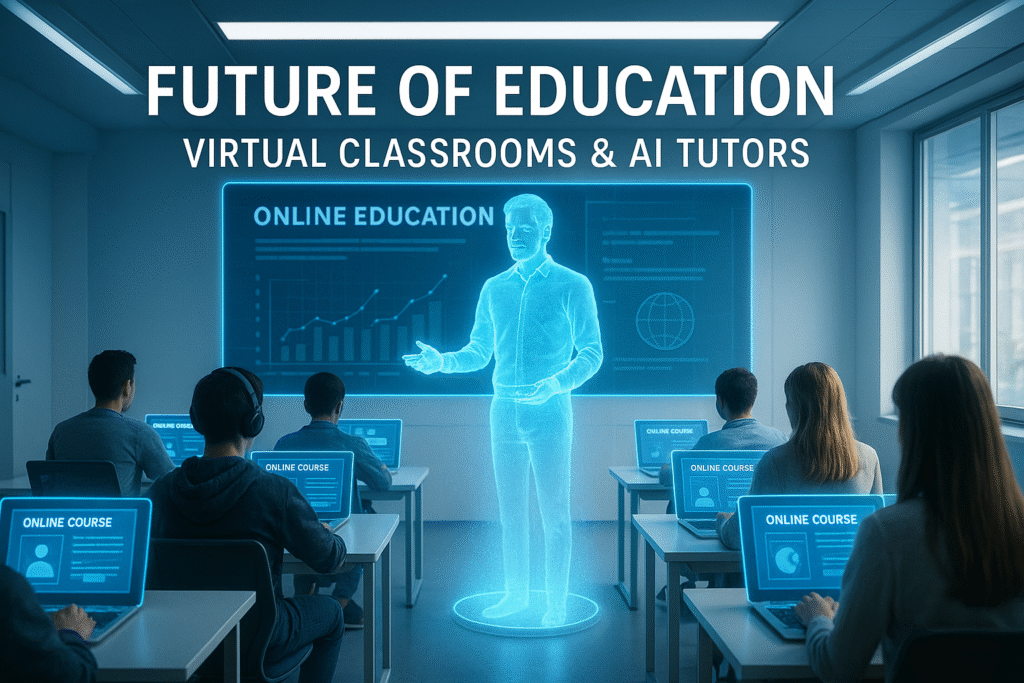Education is evolving faster than ever. With the rise of virtual classrooms and AI tutors, the way we learn and teach is undergoing a massive transformation. What used to happen only inside physical classrooms can now be done from anywhere in the world — with the help of smart technology.
This shift isn’t just about convenience; it’s about personalization, accessibility, and preparing students for a digital future. Let’s explore how AI and virtual classrooms are redefining education in 2025 and beyond.
1. What Are Virtual Classrooms?
A virtual classroom is an online space that allows teachers and students to connect in real time. It combines live video lessons, interactive whiteboards, shared documents, and discussion forums — creating a digital version of a physical classroom.
Platforms like Google Classroom, Zoom, and Microsoft Teams became popular during the pandemic, but now they’ve evolved with advanced AI features that make learning smoother and more engaging.
Benefits of Virtual Classrooms
- Accessibility: Students can join from anywhere in the world.
- Flexibility: Lessons can be recorded and revisited anytime.
- Engagement: Interactive tools keep learners active and involved.
- Inclusivity: Students with disabilities benefit from accessibility features like captions and AI-driven reading support.
Virtual classrooms make education borderless — learning has no limits.
2. What Are AI Tutors and How Do They Work?
AI tutors are digital learning assistants that use artificial intelligence to provide personalized teaching experiences. These smart systems analyze how a student learns, track their progress, and adapt lessons accordingly.
Imagine having a 24/7 tutor who never gets tired, remembers your weaknesses, and helps you master topics at your own pace. That’s what AI tutors like ChatGPT, Squirrel AI, and Carnegie Learning are doing today.
How AI Tutors Help Students
- Personalized learning paths tailored to each student’s strengths and weaknesses.
- Instant feedback on quizzes, assignments, and practice tests.
- Motivation tools that keep learners on track with reminders and rewards.
- Language and pronunciation support for global learners.
AI tutors don’t replace teachers — they enhance them by handling routine tasks and providing individualized support.
3. How AI and Virtual Learning Work Together
When combined, AI and virtual classrooms create an incredibly powerful learning system.
For example:
- AI can automatically grade assignments submitted in virtual classes.
- AI-driven analytics help teachers understand which students need extra attention.
- Virtual classrooms use AI to recommend additional learning materials and adjust the difficulty level.
In essence, AI acts as the brain, while the virtual classroom is the environment — together, they make learning smarter, faster, and more personalized.
4. The Benefits of AI-Powered Education
AI and virtual learning are transforming education for everyone — students, teachers, and institutions alike.
For Students
- Personalized lessons and instant support.
- Flexible schedules and learning at their own pace.
- Access to global classrooms and teachers.
For Teachers
- Automated grading and content creation.
- AI tools that analyze class performance.
- More time to focus on creative teaching methods.
For Schools
- Reduced operational costs.
- Global reach through online enrollments.
- Data-driven decision-making.
Education is no longer one-size-fits-all — it’s tailored to every learner.
5. Popular AI Tools in Education (2025 Edition)
Here are some AI-driven tools shaping the future of online education:
- ChatGPT / Khanmigo: Conversational AI tutors helping students solve problems and write essays.
- Grammarly & QuillBot: Writing enhancement and paraphrasing support.
- Coursera & Udemy AI Features: Personalized course recommendations.
- Duolingo: AI-based language learning and adaptive exercises.
- Quizlet AI: Smart flashcards that adjust to learning progress.
- Socratic by Google: AI that helps students understand questions step-by-step.
These tools are bridging the gap between traditional teaching and digital intelligence.
6. The Rise of Virtual Universities
With the success of platforms like Coursera, edX, and Skillshare, we’re now seeing virtual universities rise — offering accredited degrees fully online.
Students can learn from global experts without leaving their homes.
Virtual universities powered by AI:
- Analyze students’ performance to suggest personalized learning paths.
- Offer virtual internships and projects.
- Connect learners with global mentors and communities.
This model is more flexible, affordable, and scalable than traditional education.
7. Challenges of AI and Virtual Learning
Like any innovation, AI education comes with challenges.
- Digital divide: Not all students have access to stable internet or devices.
- Data privacy: AI systems collect large amounts of personal data.
- Teacher training: Educators must learn how to use new technologies effectively.
- Over-reliance on automation: Balance between AI and human touch is crucial.
The goal should be to use AI as a tool, not a replacement for teachers.
8. The Future of Education: What’s Next?
By 2030, most schools and universities will integrate AI-powered systems into their curriculum.
We’ll see:
- AI tutors embedded in every online course.
- 3D and VR classrooms creating immersive learning experiences.
- Real-time translation and accessibility tools for global learning.
- Lifelong learning becoming the norm — not the exception.
Education will be continuous, customized, and connected.
9. How to Prepare for This New Era
Students and educators should start embracing digital learning tools now.
Here’s how:
- Explore AI-based apps for learning and teaching.
- Build digital literacy and communication skills.
- Stay curious about new technologies.
- Focus on creativity and critical thinking — skills AI can’t replicate.
The future belongs to those who adapt and learn continuously.
10. Final Thoughts
The combination of virtual classrooms and AI tutors is revolutionizing the education landscape. It offers flexibility, personalization, and access like never before.
While challenges remain, the benefits are undeniable — students learn smarter, teachers teach better, and education becomes truly global.
The future of education isn’t in a building — it’s online, intelligent, and open to everyone.


